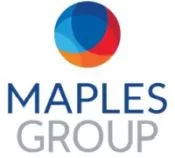- within Media, Telecoms, IT, Entertainment, Accounting and Audit and Privacy topic(s)
- with readers working within the Chemicals industries
The liquidators of the Madoff-exposed Fairfield funds began their seemingly endless slew of clawback litigation in the British Virgin Islands ("BVI") and elsewhere in 2009, with the majority of the claims being issued by Fairfield Sentry ("Sentry"). Preliminary issues were quickly identified, in an attempt by redeeming investors to minimise the time and monumental expense of a full trial against every redeemer. The redeemers only needed to win on one such issue, and did so both at first instance and in the Court of Appeal. The Privy Council has now found for them on all issues.
The preliminary issues are commonly referred to as the "Article 11 Defence" and the "Good Consideration Defence". The first turns on a provision in Sentry's Articles of Association to the effect that a certificate as to the NAV per share or as to the Subscription Price or Redemption Price given by the directors in good faith "shall be binding on all parties". This provision, submitted the redeemers, meant that the NAV could not be altered when the Madoff fraud came to light. The second, Good Consideration, was a defence to Sentry's unjust enrichment claim, on the basis that the redemption proceeds were owed to the redeemers under a valid contractual obligation, so that a payment made under an alleged mistake (here, as to the funds' NAV) could not be recovered unless the mistake was such as to avoid the entire contract.
The two defences had been considered separately in the courts below, where both at first instance and on appeal the courts found in favour of Sentry on Article 11, and in favour of the redeemers on Good Consideration. As is invariably the case, both sides' arguments had been refined by the time the proceedings reached the Privy Council, and the court took the view that the two issues were inextricably linked and had to be considered together. The redeemers argued that the claim turned on whether the funds were contractually bound to make the redemption payments. That in turn depended on whether the effect of the relevant contractual terms was that the fund was obliged to pay (a) the true NAV per share, calculated in the light of the Ponzi scheme; or (b) the NAV determined by the directors at the time of redemption. The redeemers' case was that (b) was plainly the right answer. The fund tried to stop the Privy Council from answering either question on the (previously unargued) ground that the effect of the contractual provisions should be referred back to the Commercial Court in the BVI, and that New York law (being the governing law of the subscription agreements) might be relevant to that determination. "The Board unhesitatingly rejects these submissions" was the short response from the Privy Council.
In reaching its conclusion on the questions asked, the Privy Council reviewed the provisions in the Articles which governed the subscription and redemption process, and the calculation of NAV, and concluded that the entire scheme was dependent on the price per share being definitively ascertained by the dealing day and known to the parties shortly thereafter. The fund submitted that the NAV had to be correctly calculated, and that any determination by the directors would not be definitive unless they also chose to issue a certificate of NAV, which they had never done. The first part of this submission was held to be an impossible construction. It meant that unless a certificate were issued it would always be open to the directors to vary the NAV, based on information acquired long after it was struck. This meant either (a) that the directors' determination of the NAV at the time must be treated as conclusive whether or not a certificate had been issued, or (b) that the reference to a certificate must be not to some special document issued at the discretion of the directors, but to the ordinary transaction documents issued in the course of subscriptions and redemptions. The Privy Council found that the correct approach was (b).
As to the Article 11 Defence, the Privy Council accepted that the sole object of certification was to provide finality. It could not be right for the fund's directors to be able to withhold a certificate, even if they did so for a rational and honest reason. Giving them any such discretion would only operate capriciously, and was most unlikely to have been intended by the draftsman of the Articles.
The only formal requirements for a certificate are (as a matter of language) these:
(a) A statement in writing.
(b) Issued by an authoritative source.
(c) Communicated by whatever method to those intended to rely on it.
(d) Conveying information.
(e) In a form or context showing that it was intended to be definitive.
A document did not need to satisfy any further formal requirements in order to constitute a certificate, unless its purpose or legal context plainly required them, which the fund's Articles did not. Of the various categories of document issued by the fund, the Privy Council found that three were certificates. These were: the monthly statements of account received by all members from the administrator; contract notes issued by the administrator to redeeming members and recording the transaction in question; and monthly emails from the administrator as to the final NAV per share for the last business day of the previous month. The court expressed no view as to whether information posted on the website of the investment manager might also, in appropriate circumstances, be a certificate.
This overwhelming victory for the redeemers should now be the death knell of the clawback claims in the BVI. The effect of the decision on the more than $6 billion claimed from redeemers in litigation in the US remains to be seen.
The content of this article is intended to provide a general guide to the subject matter. Specialist advice should be sought about your specific circumstances.
[View Source]

